Daniel W.W. Biostatistics: A Foundation for Analysis in the Health Sciences
Подождите немного. Документ загружается.

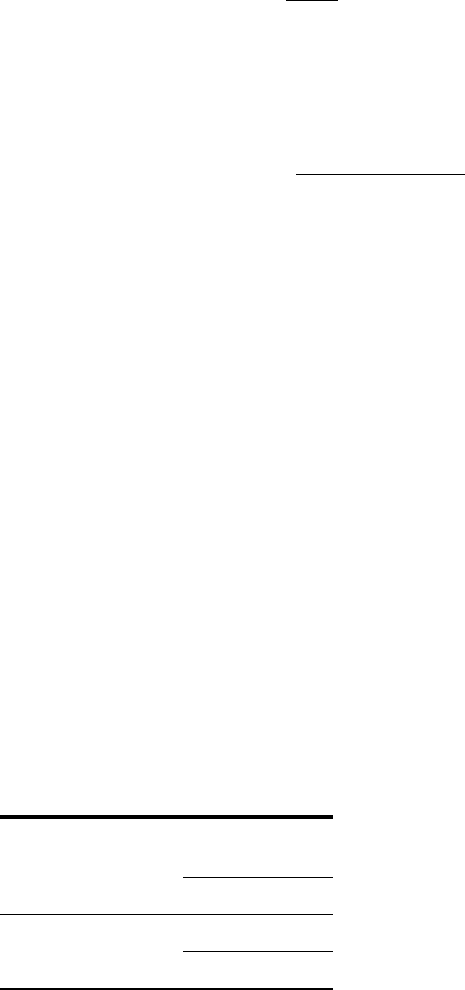
between minus infinity and plus infinity just as can the right-hand side of Equations
11.4.1 through 11.4.3. Therefore, we may write
(11.4.4)
Equation 11.4.4 is called the logistic regression model because the transformation of
(that is, p) to is called the logit transformation. Equation 11.4.4 may also
be written as
(11.4.5)
in which exp is the inverse of the natural logarithm.
The logistic regression model is widely used in health sciences research. For exam-
ple, the model is frequently used by epidemiologists as a model for the probability (inter-
preted as the risk) that an individual will acquire a disease during some specified time
period during which he or she is exposed to a condition (called a risk factor) known to be
or suspected of being associated with the disease.
Logistic Regression: Dichotomous Independent Variable The
simplest situation in which logistic regression is applicable is one in which both the
dependent and the independent variables are dichotomous. The values of the dependent
(or outcome) variable usually indicate whether or not a subject acquired a disease or
whether or not the subject died. The values of the independent variable indicate the sta-
tus of the subject relative to the presence or absence of some risk factor. In the discus-
sion that follows we assume that the dichotomies of the two variables are coded 0 and
1. When this is the case the variables may be cross-classified in a table, such as Table
11.4.1, that contains two rows and two columns. The cells of the table contain the fre-
quencies of occurrence of all possible pairs of values of the two variables: (1, 1), (1, 0),
(0, 1), and (0, 0).
An objective of the analysis of data that meet these criteria is a statistic known as
the odds ratio. To understand the concept of the odds ratio, we must understand the term
p =
exp1b
0
+ b
1
x2
1 + exp1b
0
+ b
1
x2
ln3p>11 - p24
m
y
ƒ
x
lnc
p
1 - p
d= b
0
+ b
1
x
11.4 LOGISTIC REGRESSION 567
TABLE 11.4.1 Two Cross-Classified
Dichotomous Variables Whose Values
Are Coded 1 and 0
Independent
Variable (
X
)
Dependent
Variable (
Y
)1 0
1
2 n
0,0
n
0,1
n
1,0
n
1,1

odds, which is frequently used by those who place bets on the outcomes of sporting events
or participate in other types of gambling activities. Using probability terminology, we may
define odds as follows.
DEFINITION
The odds for success are the ratio of the probability of success to the
probability of failure.
The odds ratio is a measure of how much greater (or less) the odds are for sub-
jects possessing the risk factor to experience a particular outcome. This conclusion
assumes that the outcome is a rare event. For example, when the outcome is the con-
tracting of a disease, the interpretation of the odds ratio assumes that the disease is rare.
Suppose, for example, that the outcome variable is the acquisition or nonacquisition
of skin cancer and the independent variable (or risk factor) is high levels of exposure to
the sun. Analysis of such data collected on a sample of subjects might yield an odds ratio
of 2, indicating that the odds of skin cancer are two times higher among subjects with high
levels of exposure to the sun than among subjects without high levels of exposure.
Computer software packages that perform logistic regression frequently provide as
part of their output estimates of and and the numerical value of the odds ratio.
As it turns out the odds ratio is equal to exp .
EXAMPLE 11.4.1
LaMont et al. (A-9) tested for obstructive coronary artery disease (OCAD) among 113 men
and 35 women who complained of chest pain or possible equivalent to their primary care
physician. Table 11.4.2 shows the cross-classification of OCAD with gender. We wish
to use logistic regression analysis to determine how much greater the odds are of find-
ing OCAD among men than among women.
Solution: We may use the SAS
®
software package to analyze these data. The inde-
pendent variable is gender and the dependent variable is status with respect
to having obstructive coronary artery disease (OCAD). Use of the SAS
®
command PROC LOGIST yields, as part of the resulting output, the statis-
tics shown in Figure 11.4.1.
1b
1
2
b
1
b
0
568 CHAPTER 11 REGRESSION ANALYSIS: SOME ADDITIONAL TECHNIQUES
TABLE 11.4.2 Cases of Obstructive Coronary
Artery Disease (OCAD) Classified by Sex
Disease Males Females Total
OCAD present 92 15 107
OCAD not present 21 20 41
Total 113 35 148
Source: Matthew J. Budoff, M.D. Used with permission.
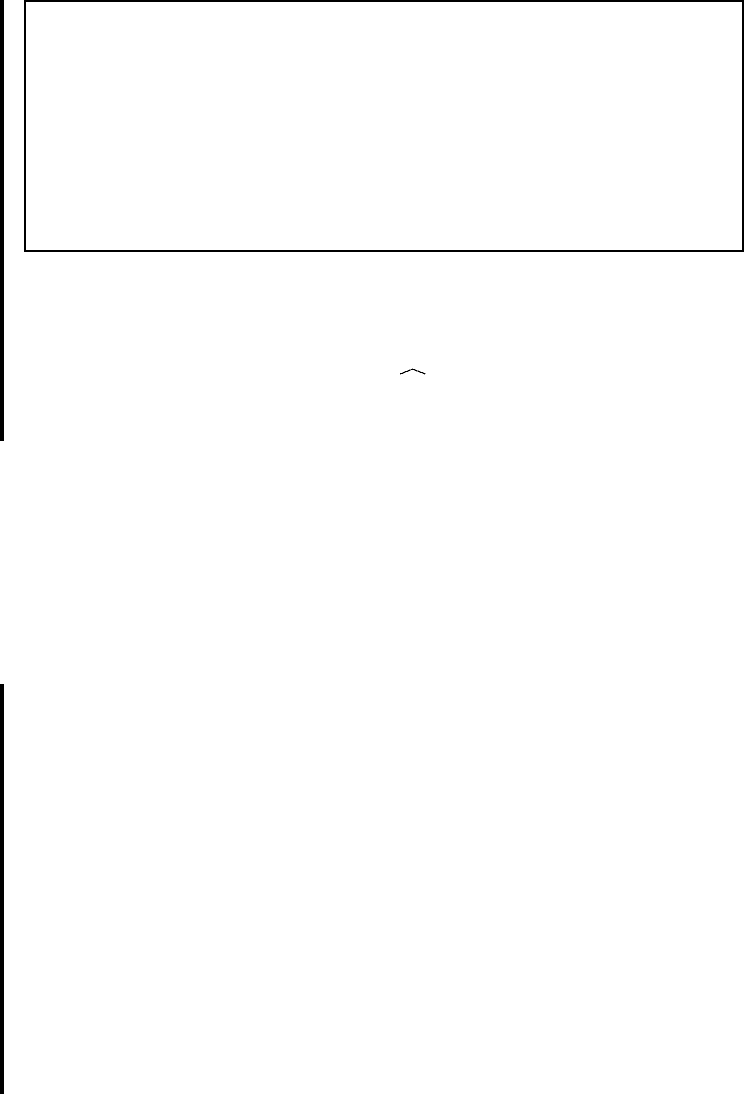
We see that the estimate of is and the estimate of is 1.7649.
The estimated odds ratio, then, is Thus we esti-
mate that the odds of finding a case of obstructive coronary artery disease to
be almost six times higher among men than women. ■
Logistic Regression: Continuous Independent Variable Now let
us consider the situation in which we have a dichotomous dependent variable and a con-
tinuous independent variable. We shall assume that a computer is available to perform
the calculations. Our discussion, consequently, will focus on an evaluation of the ade-
quacy of the model as a representation of the data at hand, interpretation of key elements
of the computer printout, and the use of the results to answer relevant questions about
the relationship between the two variables.
EXAMPLE 11.4.2
According to Gallagher et al. (A-10), cardiac rehabilitation programs offer “informa-
tion, support, and monitoring for return to activities, symptom management, and risk
factor modification.” The researchers conducted a study to identify among women fac-
tors that are associated with participation in such programs. The data in Table 11.4.3
are the ages of 185 women discharged from a hospital in Australia who met eligibility
criteria involving discharge for myocardial infarction, artery bypass surgery, angio-
plasty, or stent. We wish to use these data to obtain information regarding the relation-
ship between age (years) and participation in a cardiac rehabilitation program
( if participated, and if not). We wish also to know if we may use
the results of our analysis to predict the likelihood of participation by a woman if we
know her age.
Solution: The independent variable is the continuous variable age (AGE), and the
dependent or response variable is status with respect to attendance in a car-
diac rehabilitation program. The dependent variable is a dichotomous vari-
able that can assume one of two values: not attend, and 1 = did0 = did
ATT = 0,ATT = 1,
= exp11.76492= 5.84.
b
1
-1.4773a
11.4 LOGISTIC REGRESSION 569
The LOGISTIC Procedure
Analysis of Maximum Likelihood Estimates
Parameter DF Estimate Standard Wald
Error Chi-Square Pr > ChiSq
Intercept 1 -1.4773 0.2418 37.3118 <.0001
sex 1 1.7649 0.4185 17.7844 <.0001
FIGURE 11.4.1 Partial output from use of SAS
®
command PROC LOGISTIC with the data
of Table 11.4.2.
OR

570 CHAPTER 11 REGRESSION ANALYSIS: SOME ADDITIONAL TECHNIQUES
TABLE 11.4.3 Ages of Women Participating and
Not Participating in a Cardiac Rehabilitation
Program
Nonparticipating Participating
() ()
50 73 46 74 74 62
59 75 57 59 50 74
42 71 53 81 55 61
50 69 40 74 66 69
34 78 73 77 49 76
49 69 68 59 55 71
67 74 72 75 73 61
44 86 59 68 41 46
53 49 64 81 64 69
45 63 78 74 46 66
79 63 68 65 65 57
46 72 67 81 50 60
62 64 55 62 61 63
58 72 71 85 64 63
70 79 80 84 59 56
60 75 75 39 73 70
67 70 69 52 73 70
64 73 80 67 65 63
62 66 79 82 67 63
50 75 71 84 60 65
61 73 69 79 69 67
69 71 78 81 61 68
74 72 75 74 79 84
65 69 71 85 66 69
80 76 69 92 68 78
69 60 77 69 61 69
77 79 81 83 63 79
61 78 78 82 70 83
72 62 76 85 68 67
67 73 84 82 59 47
80 64 57
66
Source: Robyn Gallagher, R.N., Ph.D. Used with permission.
ATT 1ATT 0
attend. We use the SAS
®
software package to analyze the data. The SAS
®
command is PROC LOGISTIC, but if we wish to predict attendance in the
cardiac program, we need to use the “descending” option with PROC
LOGISTIC. (When you wish to predict the outcome labeled “1” of the
dependent variable, use the “descending option” in SAS
®
. Consult SAS
®

documentation for further details.) A partial printout of the analysis is shown
in Figure 11.4.2.
The slope of our regression is and the intercept is 1.8744. The
regression equation, then, is
where and is the predicted probability of attending
cardiac rehabilitation for a woman aged
Test of that
We reach a conclusion about the adequacy of the logistic model by testing the null
hypothesis that the slope of the regression line is zero. The test statistic is
where z is the standard normal statistic, is the sample slope , and is its
standard error (.0146) as shown in Figure 11.4.2. From these numbers we compute
which has an associated two-sided p value of .0094. We
conclude, therefore, that the logistic model is adequate. The square of z is chi-square with
1 degree of freedom, a statistic that is shown in Figure 11.4.2.
Using the Logistic Regression to Estimate
p
We may use Equation 11.4.5 and the results of our analysis to estimate p, the probabil-
ity that a woman of a given age (within the range of ages represented by the data) will
attend a cardiac rehabilitation program. Suppose, for example, that we wish to estimate
the probability that a woman who is 50 years of age will participate in a rehabilitation
program. Substituting 50 and the results shown in Figure 11.4.2 into Equation 11.4.5
gives
SAS
®
calculates the estimated probabilities for the given values of X. We can see the
estimated probabilities of attending cardiac rehabilitation programs for the age range
of the subjects enrolled in the study in Figure 11.4.3. Since the slope was negative,
we see a decreasing probability of attending a cardiac rehabilitation program for older
women.
p
N
=
exp31.8744 - 1.0379215024
1 + exp31.8744 - 1.0379215024
= .49485
z =-.0379>.0146 =-2.5959,
s
b
N
1
1-.03792b
1
N
z = b
1
N
>s
b
N
1
B
1
0H
0
x
i
.
p
N
i
y
N
i
= ln3p
N
i
>11 - p
N
i
24
y
N
i
= 1.8744 - .0379x
i
-.0379,
11.4 LOGISTIC REGRESSION 571
Standard Wald
Parameter DF Estimate Error Chi-Square Pr > ChiSq
Intercept 1 1.8744 0.9809 3.6518 0.0560
age 1 0.0379 0.0146 6.7083 0.0096
FIGURE 11.4.2 Partial SAS
®
printout of the logistic regression analysis of the data in
Table 11.4.3.
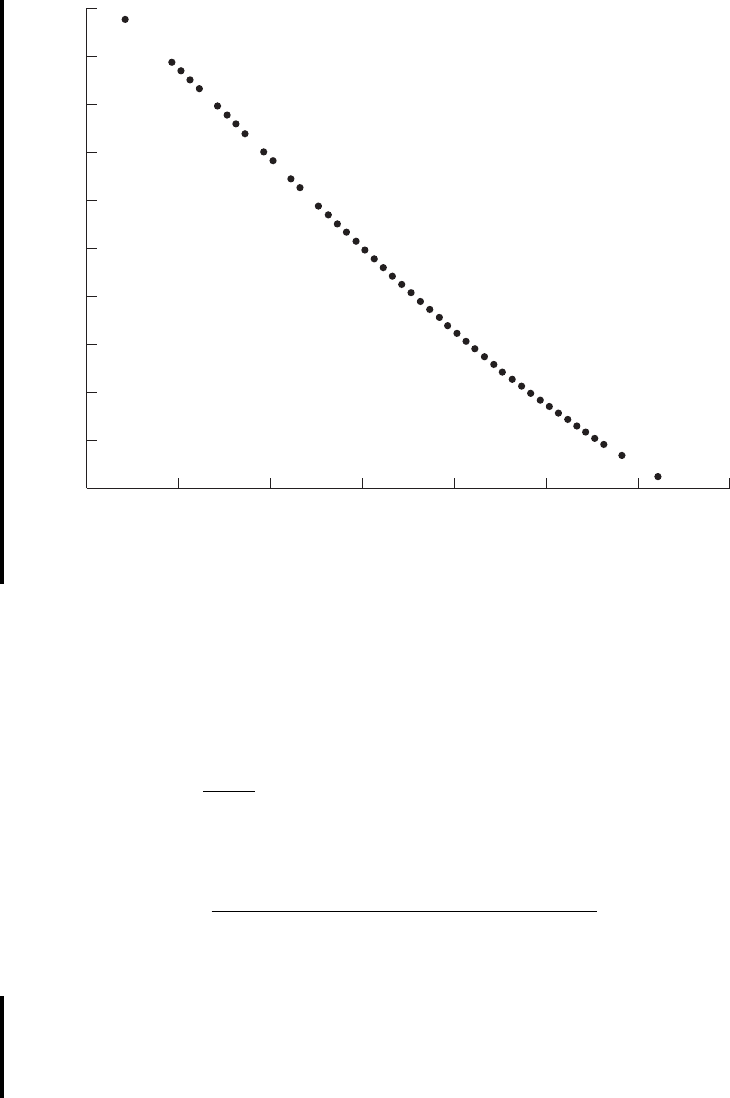
Multiple Logistic Regression Practitioners often are interested in the rela-
tionships of several independent variables to a response variable. These independent vari-
ables may be either continuous or discrete or a combination of the two.
Multiple logistic models are constructed by expanding Equations 11.4.1 to 11.4.4.
If we begin with Equation 11.4.4, multiple logistic regression can be represented as
(11.4.6)
Using the logit transformation, we now have
(11.4.7)
EXAMPLE 11.4.3
Consider the data presented in Review Exercise 24. In this study by Fils-Aime et al.
(A-21), data were gathered and classified with regard to alcohol use. Subjects were classi-
fied as having either early ( 25 years) or late ( 25 years) onset of excessive alcohol use.
p =
exp1b
0
+ b
1
x
1j
+ b
2
x
2j
+
Á
+ b
k
x
kj
2
1 + exp1b
0
+ b
1
x
1j
+ b
2
x
2j
+
Á
+ b
k
x
kj
2
lnc
p
1 - p
d= b
0
+ b
1
x
1j
+ b
2
x
2j
+
Á
+ b
k
x
kj
572 CHAPTER 11 REGRESSION ANALYSIS: SOME ADDITIONAL TECHNIQUES
30 5040 60 70 80 90 100
0.15
0.20
0.25
0.30
0.35
0.40
0.45
0.50
0.55
0.60
0.65
Age
Estimated probability
FIGURE 11.4.3 Estimated probabilities of attendance for ages within the study for
Example 11.4.2. ■
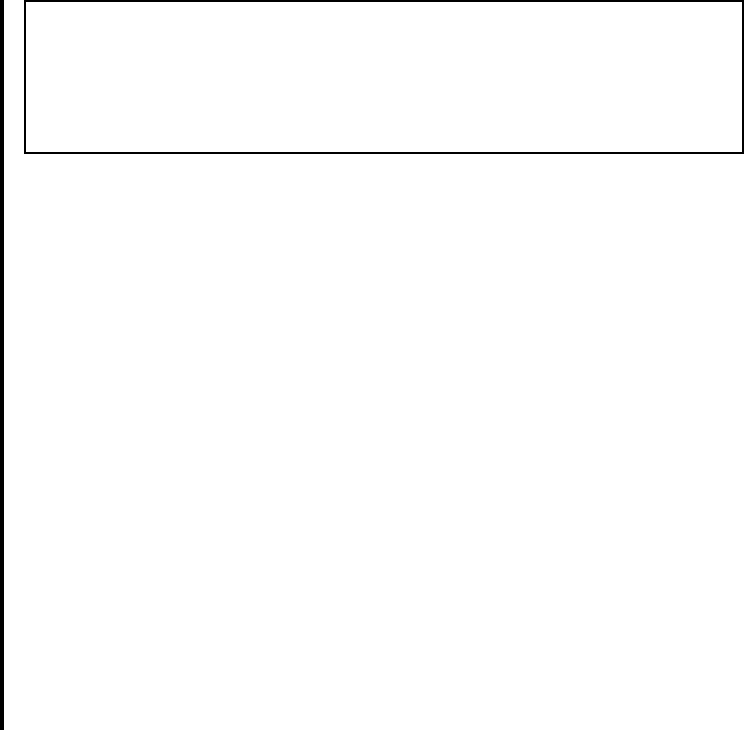
Levels of cerebrospinal fluid (CSF) tryptophan (TRYPT) and 5-hydroxyindoleacetic acid
(5-HIAA) concentrations were also obtained.
Solution: The independent variables are the concentrations of TRYPT and 5-HIAA,
and the dependent variable is the dichotomous response for onset of exces-
sive alcohol use. We use SPSS software to analyze the data. The output is
presented in Figure 11.4.3.
The equation can be written as
Note that the coefficient for TRYPT is 0, and therefore it is not playing a role in the
model.
Test of H0 that
Tests for significance of the regression coefficients can be obtained directly from Figure
11.4.3. Note that both the constant (intercept) and the 5-HIAA variables are significant
in the model (both have p values, noted as “Sig.” in the table, .05); however, TRYPT
is not significant and therefore need not be in the model, suggesting that it is not useful
for identifying those study participants with early or late alcoholism onset.
As above, probabilities can be easily obtained by using equation 11.4.7 and sub-
stituting the values obtained from the analysis. ■
Polytomous Logistic Regression Thus far we have limited our discussion
to situations in which there is a dichotomous response variable (e.g., successful or unsuc-
cessful). Often we have a situation in which multiple categories make up the response.
We may, for example, have subjects that are classified as positive, negative, and unde-
termined for a given disease (a standard polytomous response). There may also be times
when we have a response variable that is ordered. We may, for example, classify our
subjects by BMI as underweight, ideal weight, overweight, or obese (an ordinal polyto-
mous response). The modeling process is slightly more complex and requires the use of
a computer program. For those interested in exploring these valuable methods further,
we recommend the book by Hosmer and Lemeshow (1).
Further Reading We have discussed only the basic concepts and applications
of logistic regression. The technique has much wider application. Stepwise regression
analysis may be used with logistic regression. There are also techniques available for
B
1
0
y
i
N
= 2.076 - .013x
1j
+ 0x
2j
11.4 LOGISTIC REGRESSION
573
Parameter B S.E. Wald Df Sig. Exp(B)
5-HIAA .013 .006 5.878 1 .015 .987
TRYPT .000 .000 .000 1 .983 1.000
Constant 2.076 1.049 3.918 1 .048 7.970
FIGURE 11.4.3 SPSS output for the data in Example 11.4.3.
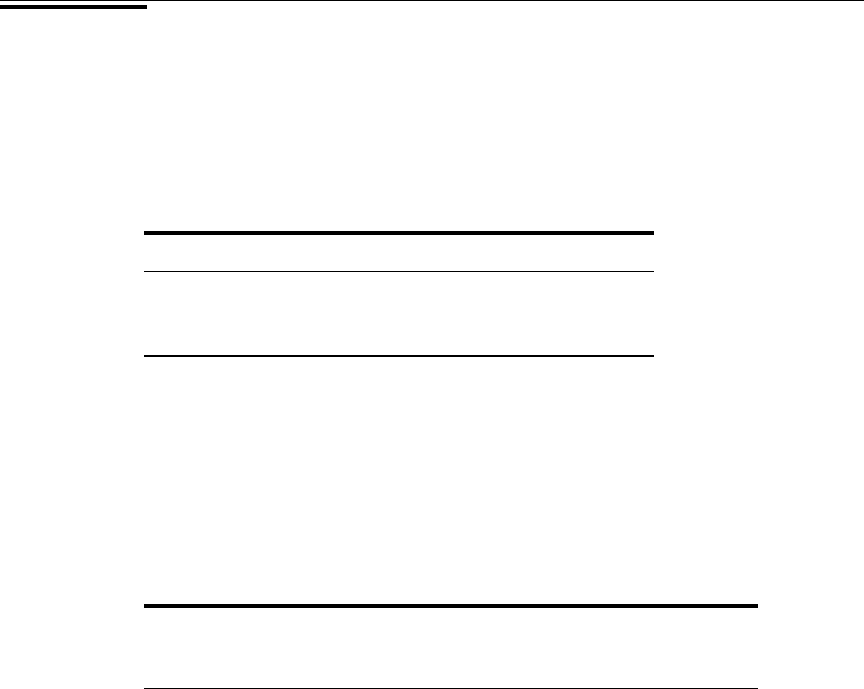
(Continued)
EXERCISES
11.4.1 In a study of violent victimization of women and men, Porcerelli et al. (A-11) collected informa-
tion from 679 women and 345 men ages 18 to 64 years at several family-practice centers in the
metropolitan Detroit area. Patients filled out a health history questionnaire that included a ques-
tion about victimization. The following table shows the sample subjects cross-classified by gender
and whether the subject self-identified as being “hit, kicked, punched, or otherwise hurt by some-
one within the past year.” Subjects answering yes to that question are classified “violently victim-
ized.” Use logistic regression analysis to find the regression coefficients and the estimate of the
odds ratio. Write an interpretation of your results.
Victimization Women Men Total
No victimization 611 308 919
Violently victimized 68 37 105
Total 679 345 1024
Source: John H. Porcerelli, Rosemary Cogan, Patricia P. West, Edward A.
Rose, Dawn Lambrecht, Karen E. Wilson, Richard K. Severson, and Dunia
Karana, “Violent Victimization of Women and Men: Physical and Psychiatric
Symptoms,” Journal of the American Board of Family Practice, 16 (2003),
32–39.
11.4.2 Refer to the research of Gallagher et al. (A-10) discussed in Example 11.4.2. Another covariate
of interest was a score using the Hospital Anxiety and Depression Index. A higher value for this
score indicates a higher level of anxiety and depression. Use the following data to predict whether
a woman in the study participated in a cardiac rehabilitation program.
Hospital Anxiety and
Hospital Anxiety and Depression Index Depression Index Scores for
Scores for Nonparticipating Women Participating Women
17 14 19 16 23 25
72169 36
19 13 8 22 24 29
16 15 13 17 13 22
23 21 4 14 26 11
27 12 15 14 19 12
23 9 23 5 25 20
18 29 19 5 15 18
21 41414 2224
27 18 19 20 13 18
14 22 17 21 21 8
574 CHAPTER 11 REGRESSION ANALYSIS: SOME ADDITIONAL TECHNIQUES
constructing confidence intervals for odds ratios. The reader who wishes to learn more
about logistic regression may consult the books by Hosmer and Lemeshow (1) and
Kleinbaum (2).
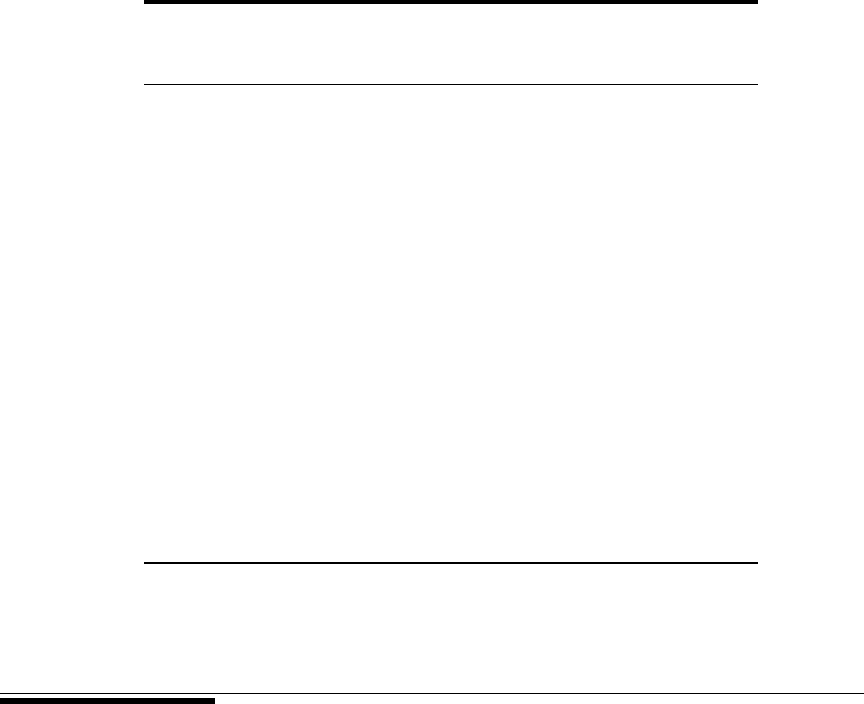
Hospital Anxiety and
Hospital Anxiety and Depression Index Depression Index Scores for
Scores for Nonparticipating Women Participating Women
25 51317 1510
19 27 14 17 12 17
23 16 14 10 25 14
6111713 2921
8192610 1725
15 23 15 20 21 25
30 22 19 3 8 16
18 25 16 18 19 23
10 11 10 9 16 19
29 20 15 10 24 24
81122 5 1711
12 28 8 15 26 17
27 12 15 13 12 19
12 19 20 16 19 20
91812 1317
16 13 2 23 31
6 12 6 11 0
22 7 14 17 18
10 12 19 29 18
91414 615
11 13 19 20
Source: Robyn Gallagher, R.N., Ph.D. Used with permission.
11.5 SUMMARY
This chapter is included for the benefit of those who wish to extend their understand-
ing of regression analysis and their ability to apply techniques to models that are more
complex than those covered in Chapters 9 and 10. In this chapter we present some
additional topics from regression analysis. We discuss the analysis that is appropri-
ate when one or more of the independent variables is dichotomous. In this discussion
the concept of dummy variable coding is presented. A second topic that we discuss
is how to select the most useful independent variables when we have a long list of
potential candidates. The technique we illustrate for the purpose is stepwise regres-
sion analysis. Finally, we present the basic concepts and procedures that are involved
in logistic regression analysis. We cover two situations: the case in which the inde-
pendent variable is dichotomous, and the case in which the independent variable is
continuous.
Since the calculations involved in obtaining useful results from data that are appro-
priate for analysis by means of the techniques presented in this chapter are complicated
and time-consuming when attempted by hand, it is recommended that a computer be
used to work the exercises.
11.5 SUMMARY 575
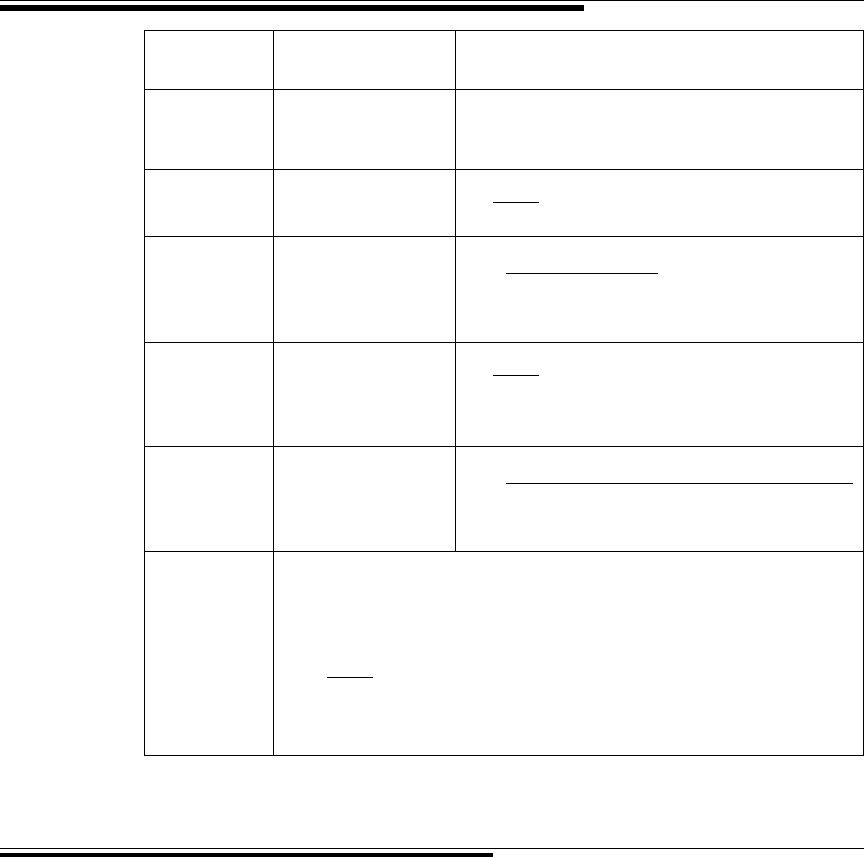
SUMMARY OF FORMULAS FOR CHAPTER 11
Formula
Number Name Formula
11.4.1–11.4.3 Representations of
the simple linear
regression model
11.4.4 Simple logistic
regression model
11.4.5 Alternative
representation of the
simple logistic
regression model
11.4.6 Alternative
representation of the
multiple logistic
regression model
11.4.7 Alternative
representation of the
multiple logistic
regression model
Symbol Key • regression intercept
• regression coefficient
• regression model error term
• expected value of y at x
• logit transformation
• mean of y at x
• x
i
value of independent variable at i
m
y|x
lnc
p
1 - p
d
E
1y
ƒ
x2
P
b
i
b
0
p =
exp1b
0
+ b
1
x
1j
+ b
2
x
2j
+
Á
+ b
k
x
kj
2
1 + exp1b
0
+ b
1
x
1j
+ b
2
x
2j
+
Á
+ b
k
x
kj
2
lnc
p
1 - p
d= b
0
+ b
1
x
1j
+ b
2
x
2j
+
Á
+ b
k
x
kj
p =
exp1b
0
+ b
1
x2
1 + exp1b
0
+ b
1
x2
lnc
p
1 - p
d= b
0
+ b
1
x
E
1y
ƒ
x2
= b
0
+ b
1
x
m
y
ƒ
x
= b
0
+ b
1
x
y = b
0
+ b
1
x +P
576 CHAPTER 11 REGRESSION ANALYSIS: SOME ADDITIONAL TECHNIQUES
REVIEW QUESTIONS AND EXERCISES
1. What is a qualitative variable?
2. What is a dummy variable?
3. Explain and illustrate the technique of dummy variable coding.
4. Why is a knowledge of variable selection techniques important to the health sciences researcher?
5. What is stepwise regression?
6. Explain the basic concept involved in stepwise regression.
